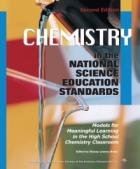

Most ebook files are in PDF format, so you can easily read them using various software such as Foxit Reader or directly on the Google Chrome browser.
Some ebook files are released by publishers in other formats such as .awz, .mobi, .epub, .fb2, etc. You may need to install specific software to read these formats on mobile/PC, such as Calibre.
Please read the tutorial at this link: https://ebookbell.com/faq
We offer FREE conversion to the popular formats you request; however, this may take some time. Therefore, right after payment, please email us, and we will try to provide the service as quickly as possible.
For some exceptional file formats or broken links (if any), please refrain from opening any disputes. Instead, email us first, and we will try to assist within a maximum of 6 hours.
EbookBell Team

4.7
26 reviews 
ISBN 10: 0841269912
ISBN 13: 978-0841269910
Author: Stacey Bretz
Purpose & Background
This second edition (2008) responds to evolving educational landscapes—updated state science standards, widespread internet use, new technologies, and the impact of No Child Left Behind—by offering fresh models for meaningful chemistry learning in high school classrooms
Structure & Contributors
Edited by Stacey Lowery Bretz, with chapters authored by both university researchers and practicing high school teachers, ensuring theoretical rigor alongside real-world classroom examples
Key Features & Chapters
Framework & Rationale: Starts with discussions on the role of chemistry in modern education, unifying science themes, and the vision behind inquiry-based learning
Instruction & Inquiry: Highlights strategies like POGIL and MORE, integrates labs and technology (probes, graphing calculators), and explores virtual lab options
Contextual Learning: Explores connections with biology, earth science, societal issues, history, personal perspectives, and urban classroom contexts
Assessment & Standards Alignment: Offers guidance on chemistry assessment design aligned to NSES and Benchmarks, including AP Chemistry updates and formative/summative assessment tips
Diversity & Learning: Includes new chapters focused on English-language learners, student misconceptions, K–8 prior knowledge, and research-based learning principles
Professional Development: Discusses teacher PD strategies and ACS support resources
Audience
Designed for high school chemistry teachers, administrators, science education faculty, and PD providers. It emphasizes practical, tested strategies from experienced educators
Teaching and Learning High School Chemistry
Thinking About Standards
Why Chemistry?
Chemistry and Unifying Themes of Science
Inquiry Learning: What Is It? How Do You Do It?
Chemistry and the Life Science Standards
Earth System Science Topics in the News: How Teachers Can Use These Contexts to Teach Chemistry and Inquiry
Technology Standards and the Chemistry Laboratory
Bringing Social and Personal Perspectives into Standards-Based Chemistry Instruction in an Urban School District
Content Standards for the History and Nature of Science
Professional Development of Chemistry Teachers
Assessment of Student Learning
AP Chemistry: Course and Exam Review
Embracing Diverse and English Language Learners in Chemistry
Prior Knowledge of Chemistry Students: Chemistry K–8
Using the Research-Based Standards to Help Students Learn
ACS and Its Role in the Future of Chemistry Education
chemistry in the national science education
chemistry in school
chemistry in the natural world
chemistry education major
national chemistry standards
Tags: Stacey Bretz, Chemistry, National Science, Education Standards, Models, Meaningful Learning